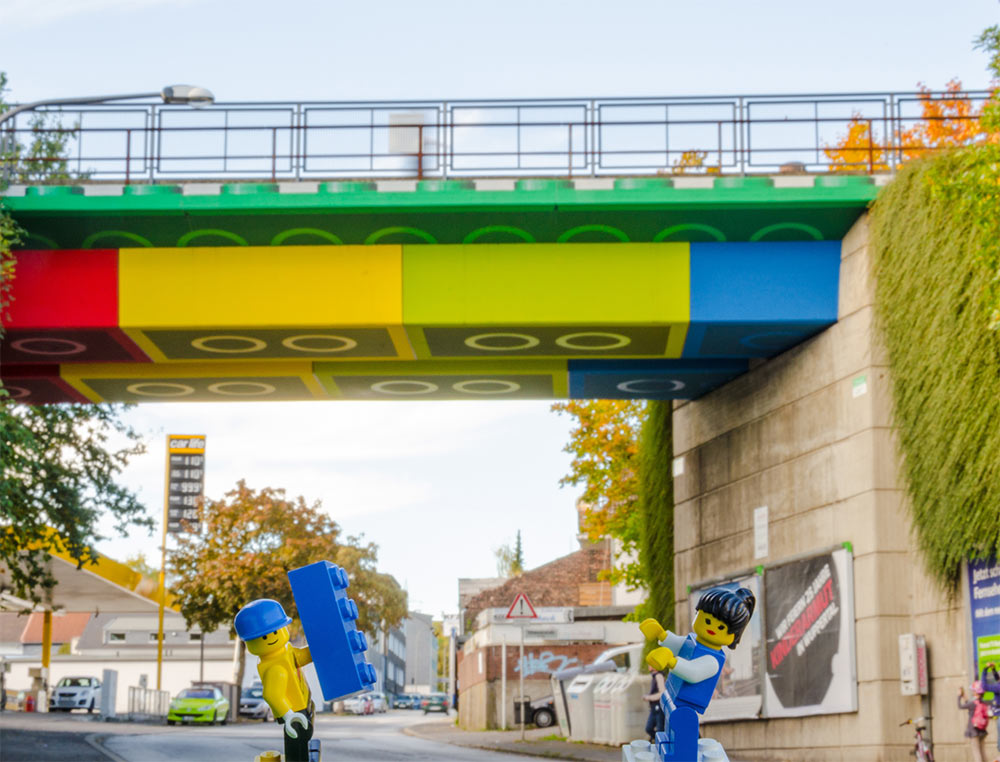The humble Lego brick has come a long way. From being a toy for children, it has become a medium of artistic expression. Today, it dominates the cultural landscape of entire nations. There’s even a Lego bridge in Wuppertal, Germany and a Lego house in Billund, Denmark, not to forget the Lego fan pages and online communities such as Brickipedia, where legions of Lego followers and collectors discuss and describe everything about the toys, from its innovative parts to its checkered history. Today, Lego is even being used to make bionic arms for children.
This wasn’t always the case. There was a time not so long ago when Lego was on the precipice of total collapse. Lego’s patent to exclusively manufacture the Lego brick expired in 1988, allowing a number of cheaper brands to flood the market. Lego was struggling to find its footing in a market dominated by video games and “craze toys” like Pokemon that were built to cash in on a craze and were meant to have a short shelf life. By 1997, Lego had begun to conduct wild experiments with its toys. It hired designers from all the top schools across Europe, with no previous experience in toy design, and gave them free reign over production. The number of special parts the company produced grew exponentially. In 2003, at the peak of their financial distress, they had gone from making 6,000 to 12,000 parts which were sourced from different suppliers—a logistical nightmare for the company. In 2003, they had recorded a $238 million loss, had racked up a debt of $800 million and were on the brink of bankruptcy. In 2004, when Jorgen Vig Knudstrupp took over from Kjeld Kirk Kristianson as CEO, he discovered, to his horror, that some of the Lego sets the company was producing, such as the Lego micro-motor and fiber-optic kits, cost more for them to make than the price they were being sold for.

A Dark Time for the Company
The period between 1997 and 2003 was definitely a dark time for Lego but it was also the period when they set in motion important trends that would go on to save them. This was when they landed important licensing deals and began manufacturing Star Wars and Harry Potter themed sets. To this day, the Millenium Falcon continues to be one of the most popular Lego sets in production. The sale of these products made a small dent in recovering their debt but they were still hemorrhaging a lot of their profits in diverse ventures ranging from video games, jewelry, a clothing line and theme parks called Legoland.
Lego discovered that between movie releases, the sale of their themed-sets went down. They could not depend on someone else’s movie release for product sales. They had to come up with their own idea to captivate the public imagination. They knew that any new direction they took had to transcend mediums. Video games, comic books and TV shows would all have to play a part in building the new toy’s persona, so to speak. After trying different product lines including Slizers and Roboriders (both of which were Lego’s attempt to make a craze toy), followed by the Boneheads of Voodoo Island, Lego finally created Bionicle.

Bionicle saves Lego
The story of Bionicle unfolds on the mythical island of Mata Nui, which is actually the body of a giant automaton containing the Great Spirit from another planet, trapped in eternal slumber by the evil Makuta Teridax. The Toa, superheroes from outer space, land on the island to help the Matorans (residents of Mata Nui) fight Makuta and awaken the Great Spirit. Faber imagined the battle to be taking place on the body of a giant, much like the battle that was taking place within his own body. This series of toys was discontinued in 2010 when its popularity began to wane but it acquired a cult following. Fans continue to create and share content about the world of Mata Nui online to this day. With Bionicle, Lego did something completely new, they created their own intellectual property instead of relying on movie releases to produce new products. It marked a momentous shift in the organization. Lego had finally found a formula that worked and they quickly applied it to a new line of products—Lego Ninjago.

A toy for adults too…

Lego Ideas: The Fountain of pop culture references

The story of Lego recovering from the brink of extinction to become one of the most powerful brands in the world is a case study in resilience and the power of creative thinking. Their story is studied in big business schools even to this day. Sometimes staying current is not about cashing in to the next new trend but about being ahead of the curve by going back to do what you know best. The story of Lego shows us just how ideas fuel growth. Sometimes these ideas are completely new and sometimes it’s just about looking at a small, colorful brick in a new way.




